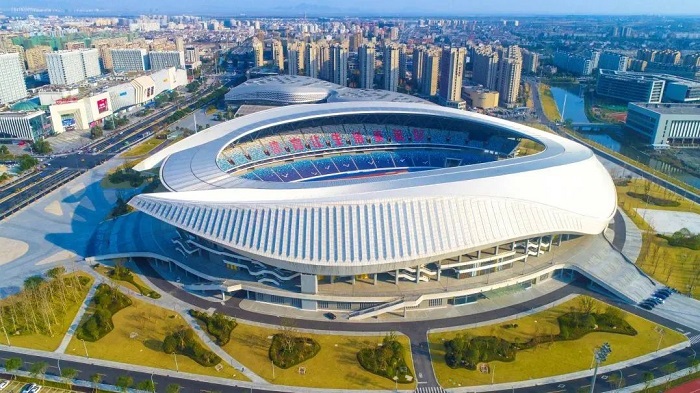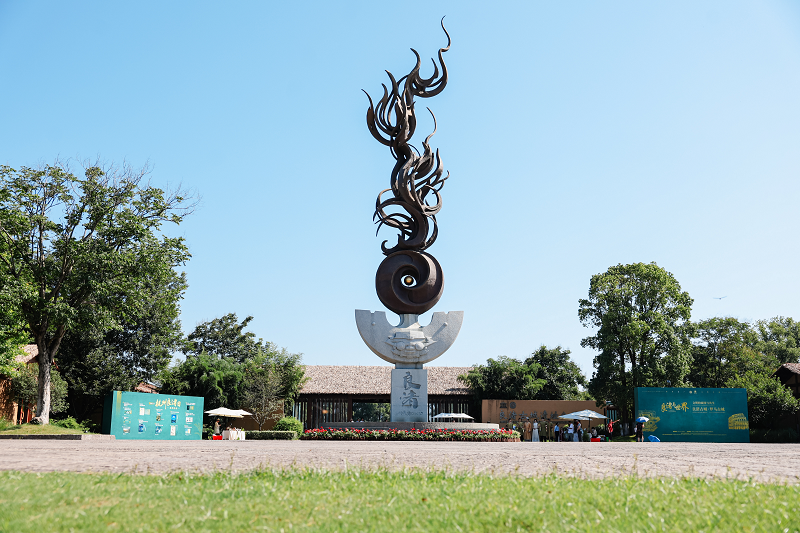The second half of the Hangzhou Asian Games: sustainable venue utilization

A bird's-eye view of the Hangzhou Olympic Sports Center Aquatic Center. [Photo/zj.people.cn]
Making use of venues after large-scale sporting events has long been an international challenge. Currently, 90 percent of the 51 venues from the Hangzhou Asian Games have formulated specific plans for post-event use.
The athlete dining hall at the Hangzhou Asian Games Village, with its striking red and white exteriors adorned with blue accents, is eye-catching. Surprisingly, the structures initially served as an elementary school.
Covering a vast area of 8,400 square meters and accommodating almost 4,200 seats, the dining facility operates from 5:00 am to 1:00 am the next day during the Games, providing meal services to over 10,000 athletes. After the event, temporary additions will be removed to its original state as a school building.
One courtyard within the athletes' village, designed in a distinctive Jiangnan architectural style, is set to be transformed into a kindergarten after the Games. The transition will allow children to experience the charm of China's exceptional traditional culture.
Moreover, to enable the public to benefit from the achievements of the Games, Hangzhou and five co-host cities are blending Games-related infrastructure with urban planning.
For example, several sports facilities have been integrated into the lives of locals. In Shaoxing, Jianhu Football Stadium has hosted 41 games and welcomed over 1,500 people for free sports activities this year. In Hangzhou, Asian Games venues were open to the public before the Games even began, attracting over 10 million bookings and involving more than a million people in sports activities.

The main stadium of the Wenzhou Olympic Sports Center. [Photo/zj.people.cn]



